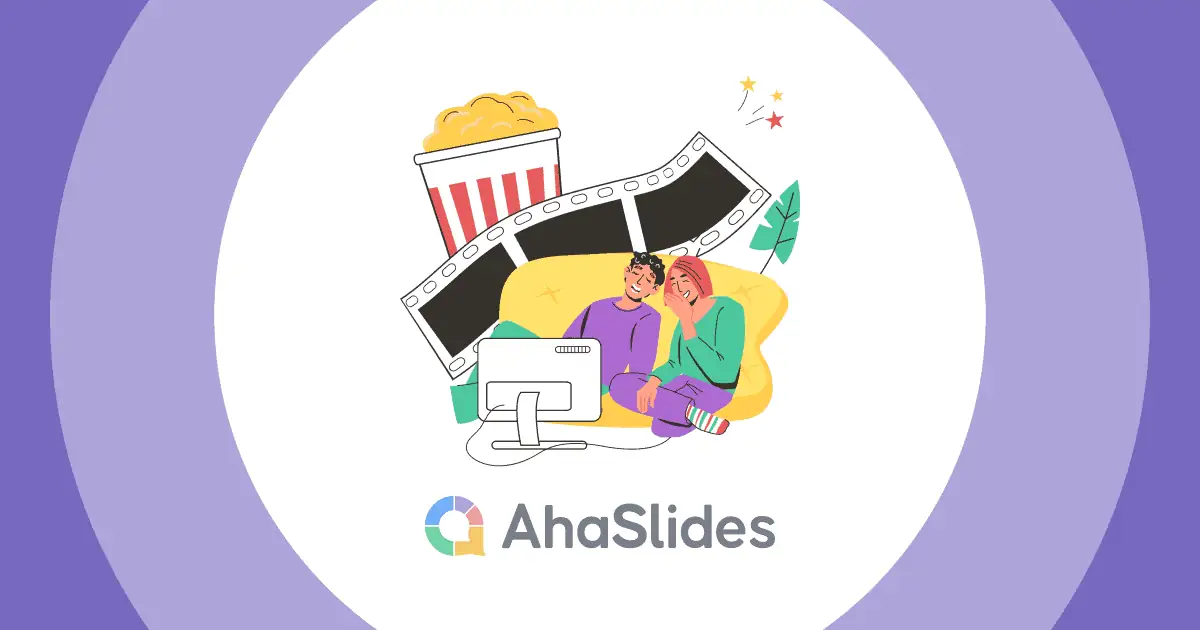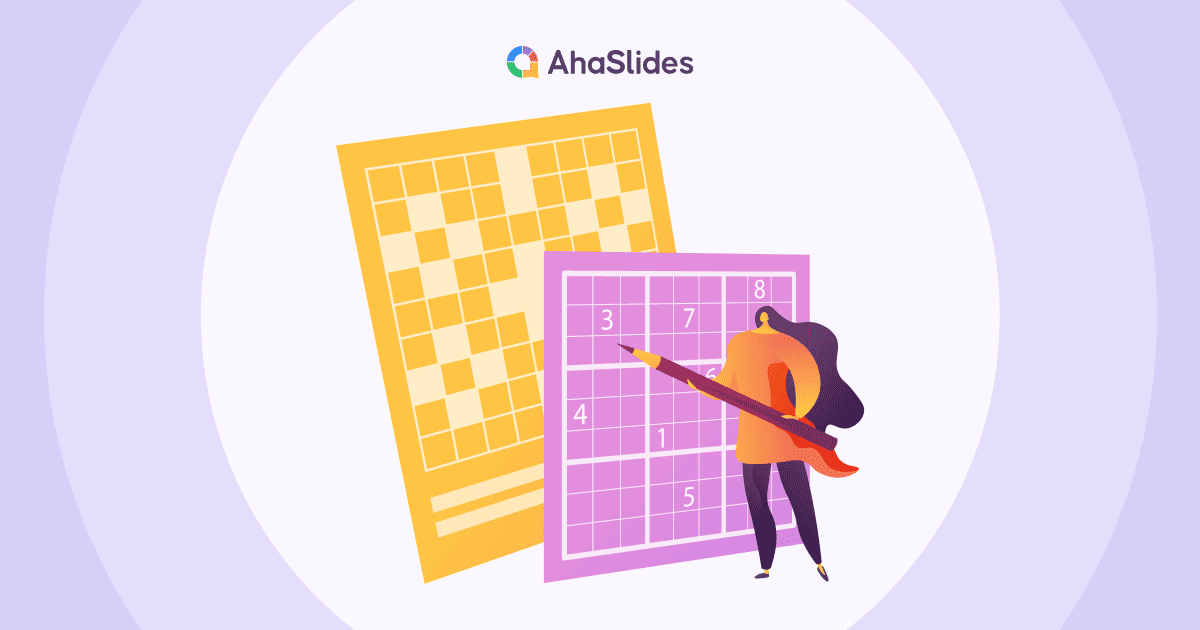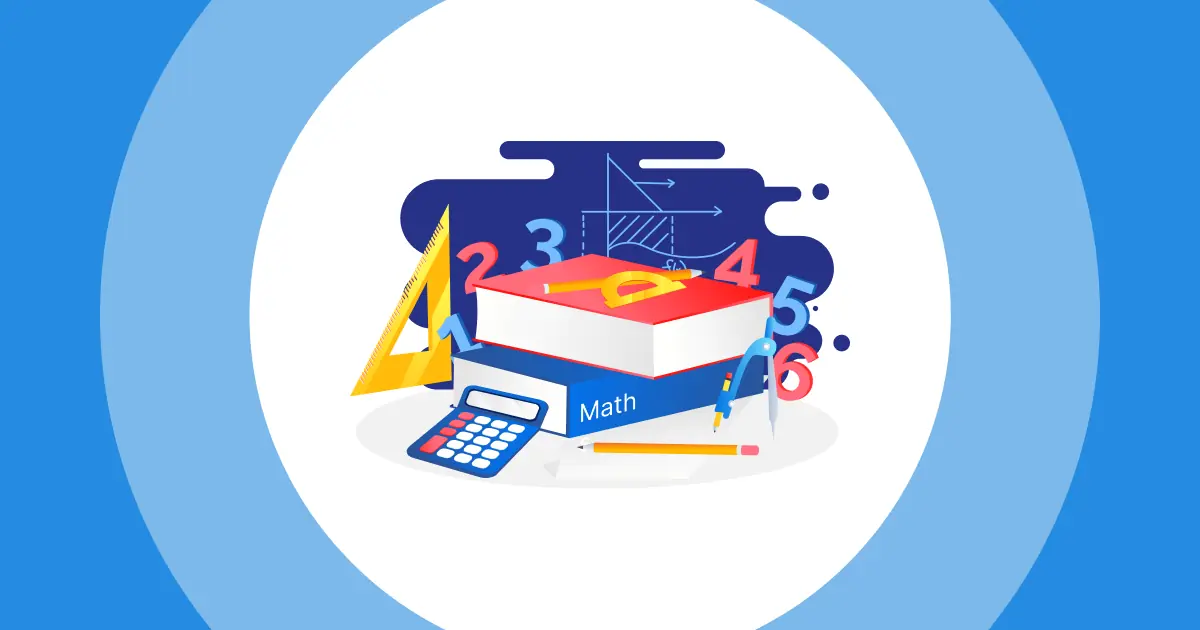Who doesn't love tricky and challenging brain teasers?
Want to stretch your brain? Want to know how smart you are? It's time to challenge your intellect with adult brain teasers. Brain teasers are more than just straightforward puzzles and riddles. It is the best exercise to train your brain and have fun simultaneously.
If you don't know where to start brain teaser puzzles, here are recommended 60 Brain Teasers For Adults divided into three levels with answers, from easy, medium to hard brain teasers. Let's immerse ourselves in the world of thrilling and brain-twisting!
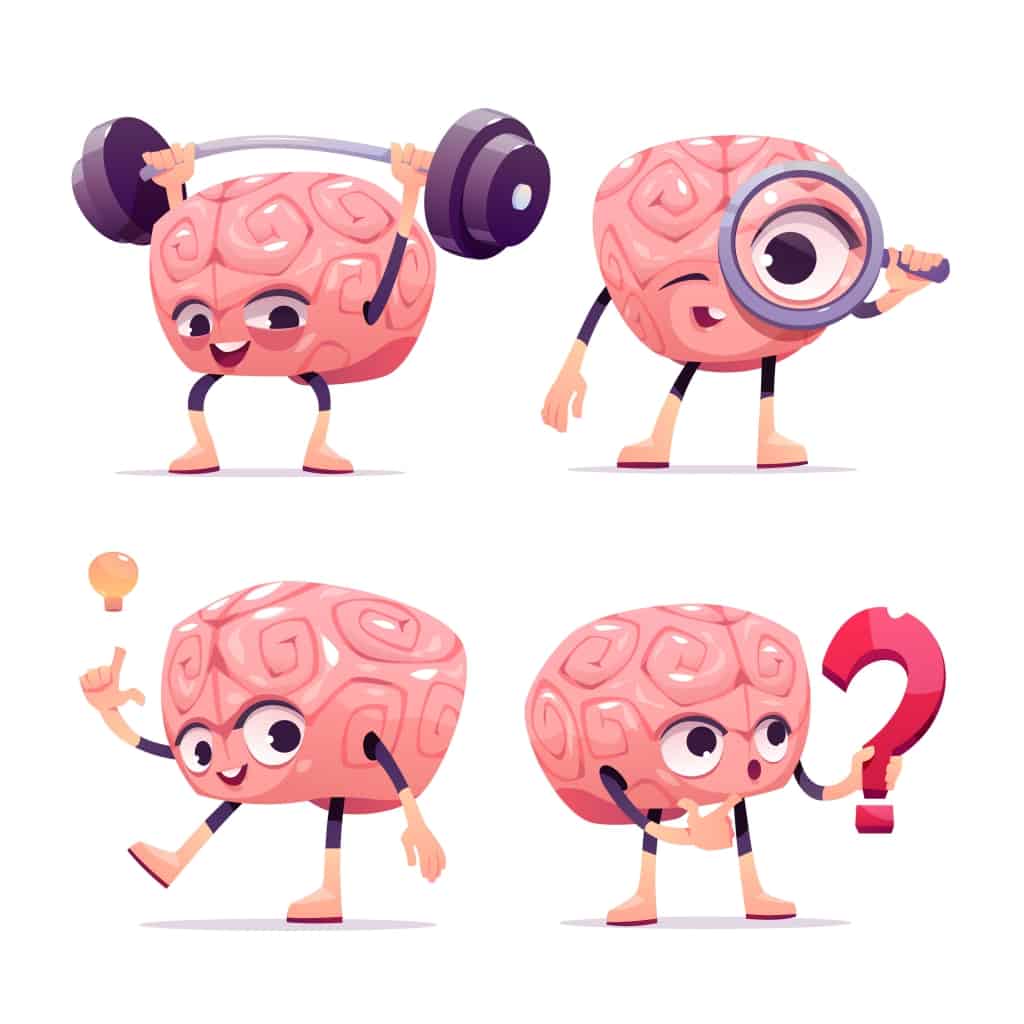
Table of Contents
- What are brain teasers for adults?
- 60 free brain teasers for adults with answers
- Frequently Asked Questions
- Bottom Line
Tips for Better Engagement

Interact Better In Your Presentation!
Instead of a boring session, be a creative funny host by mixing quizzes and games altogether! All they need is a phone to make any hangout, meeting or lesson more engaging!
🚀 Create Free Slides ☁️
What are brain teasers for adults?
Broadly speaking, a brain teaser is a type of puzzle or brain game, where you contest your mind with math brain teasers, visual brain teasers, fun brain teasers, and other sorts of puzzles that keeps the ties between your brain cells sharp.
Brain teasers are often tricky questions, where the solution won’t be straightforward, you’ll have to use a creative, and cognitive thinking process to solve it.
Related:
- 70+ Math Quiz Questions For Fun Excercises in Class
- Ultimate Cartoon Quiz: 50 Best Questions and Answers
- 45+ Best Tricky Questions With Answers To Scatch Your Brain
- 30 Best Word to Start Wordle (+Tips and Tricks) | Updated
60 free brain teasers for adults with answers
We've got plenty of brain teasers for adults in different types, such as math, fun, and picture. Let's see how many you can get right?
Round 1: Easy brain teasers for adults
Don't rush! Let's warm up your brain with some easy brain teasers for adults
1. How can 8 + 8 = 4?
A: When you think in terms of time. 8 AM + 8 hours= 4 o’clock.
2. A red house is made from red bricks. A blue house is made from blue bricks. A yellow house is made from yellow bricks. What is a greenhouse made from?
A: Glass
3. What is harder to catch the faster you run?
A: Your breath
4. What is special about these words: Job, Polish, Herb?
A: They are pronounced differently when the first letter is capitalized.
5. What has cities, but no houses; forests, but no trees; and water, but no fish?
A: A map
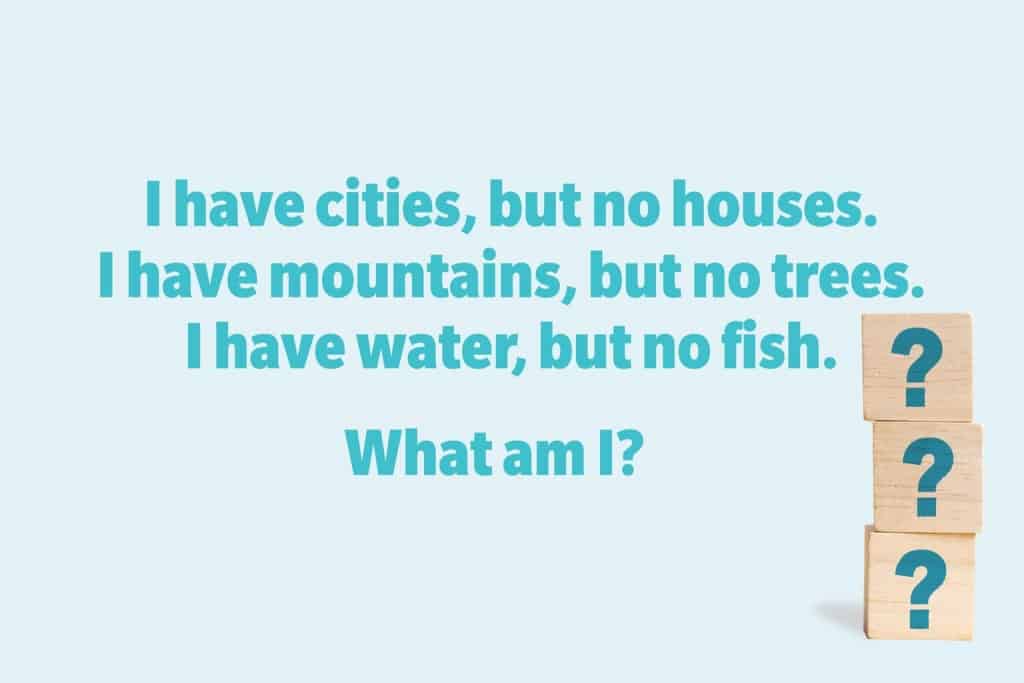
6. I can't be bought, but I can be stolen with a glance. I'm worthless to one, but priceless to two. What am I?
A: Love
7. I’m tall when I’m young and I’m short when I’m old. What am I?
A: A candle.
8. The more you take, the more you leave behind. What are they?
A: Footprints
9. What letters are found every single day of the week?
A: D, A, Y
10. What can I see once in a minute, twice in a moment, and never in 1,000 years?
A: The letter M.
11. People make me, save me, change me, take me. What am I?
A: Money
12. No matter how little or how much you use me, you change me every month. What am I?
A: A calendar
13. In my hand I have two coins that are newly minted. Together, they total 30 cents. One isn’t a nickel. What are the coins?
A: A quarter and a nickel
14. What fastens two people yet touches only one?
A: A wedding ring
15: I am taken from a mine, and shut up in a wooden case, from which I am never released, and yet I am used by almost everybody. What am I?
A: Pencil lead
16. What travels faster: heat or cold?
A: Heat because you can catch a cold!
17. I can run but not walk. I have a mouth but cannot talk. I have a bed but I cannot sleep. Who am I?
A: River
18. I follow you all the time, but you can never touch me or catch me. What am I?
A: Your shadow
19: I have a large money box, 10 inches wide and 5 inches tall. Roughly how many coins can I place in this empty money box?
A: Just one, after which it will no longer be empty
20. Mary is running in a race and passes the person in second place, what place is Mary in?
A: Second place
Round 2: Medium brain teasers for adults
21. What makes this number unique — 8,549,176,320?
A: This number has all the numbers from 0-9 exactly once and what is special is they are in the lexicographical order of their English words.
22. Every Friday, Tim visits his favorite coffee shop. Each month, he visits the coffee shop 4 times. But some months have more Fridays than others, and Tim visits the coffee shop more often. What is the maximum amount of months like this in a year?
A: 5
23. There are 5 more red balls than yellow ones. Choose the appropriate scheme.
A: 2

24. You walk into a room, and on a table, there’s a match, a lamp, a candle, and a fireplace. What would you light first?
A: The match
25. What can be stolen, mistaken, or altered, yet never leaves you your entire life?
A: Your identity
26. A man pushes his car to a hotel and tells the owner he’s bankrupt. Why?
A: He’s playing Monopoly
27. What is always in front of you but can’t be seen?
A: The future
28. A doctor and a bus driver are both in love with the same woman, an attractive girl named Sarah. The bus driver had to go on a long bus trip that would last a week. Before he left, he gave Sarah seven apples. Why?
A: An apple a day keeps the doctor away!
29. A truck is driving to a town and meets four cars on the way. How many vehicles are going to the town?
A: Only the truck
30. Archie lied on Mondays, Tuesdays, and Wednesdays, but told the truth every other day of the week.
Kent lied on Thursdays, Fridays, and Saturdays, but told the truth every other day of the week.
Archie: I lied yesterday.
Kent: I lied yesterday, too.
What day of the week was yesterday?
A: Wednesday
31. What came first, the chicken or the egg?
A: The egg. Dinosaurs laid eggs long before there were chickens!
32. I have a big mouth and I am also quite loud! I am NOT a gossip but I do get involved with everyone's dirty business. What am I?
A: A vacuum cleaner
33. Your parents have six sons including you and each son has one sister. How many people are in the family?
A: Nine—two parents, six sons, and one daughter
34. A man was walking in the rain. He was in the middle of nowhere. He had nothing and nowhere to hide. He came home all wet, but not a single hair on his head was wet. Why is that?
A: The man was bald
35. A man stands on one side of a river, his dog on the other. The man calls his dog, who immediately crosses the river without getting wet and without using a bridge or a boat. How did the dog do it?
A: The river is frozen
36. The person who makes it has no need for it. The person who purchases it does not use it. The person who does use it does not know he or she is. What is it?
A: A coffin
37. In 1990, a person was 15 years old. In 1995, that same person was 10 years old. How can this be?
A: The person was born in 2005 BC.
38. Which balls should you put in the hole in order to total 30?
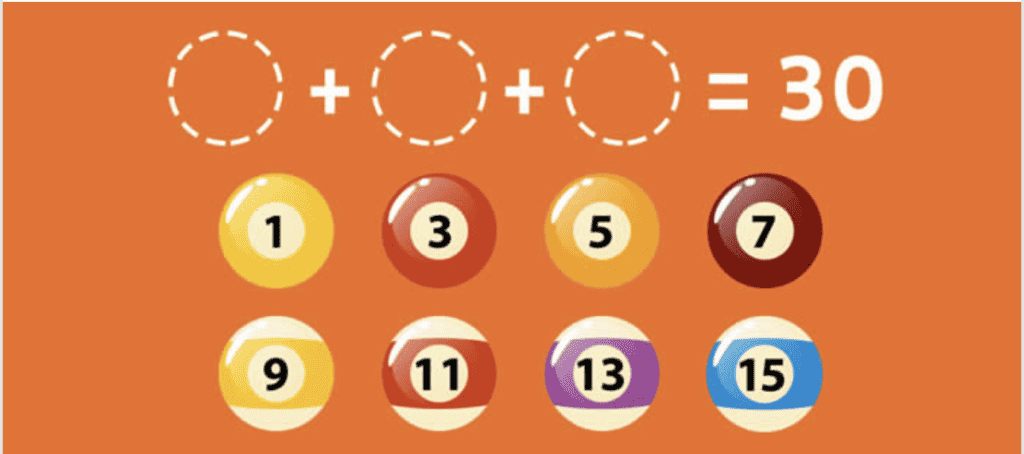
A: If you place balls 11 and 13 into the holes, you get 24. Then, if you put ball 9 upside down in the hole, you get 24 + 6 = 30.
39. View the blocks on the left from the orange point and direction of the arrow. Which image on the right is the correct view?
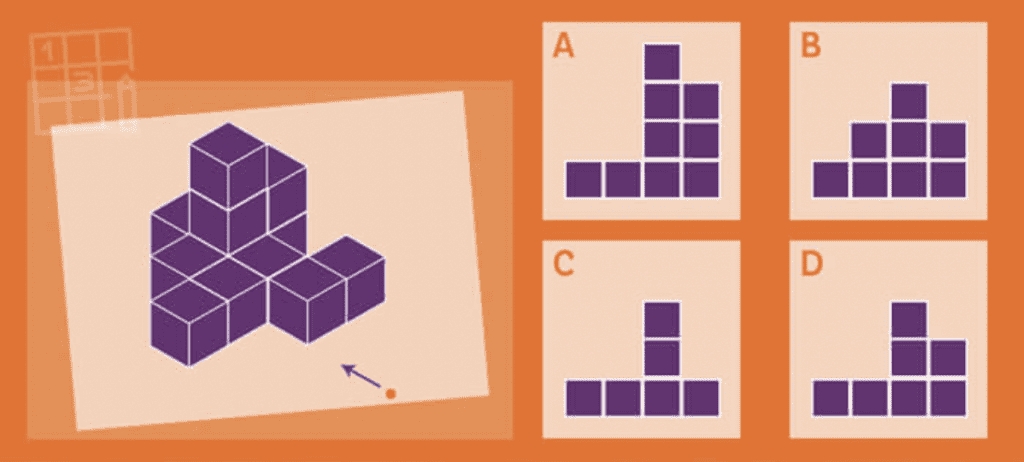
A: D
40. Can you find how many squares you see in the picture?

A: The total is 17 squares, including 6 small, 6 medium, 3 large, and 2 very large ones.
Round 3: Hard brain teasers for adults
41. I speak without a mouth and hear without ears. I have no body, but I come alive with wind. What am I?
A: An echo
42. They fill me up and you empty me, almost every day; if you raise my arm, I work the opposite way. What am I?
A: A mailbox
43. The water level in a reservoir is low, but doubles every day. It takes 60 days to fill the reservoir. How long does it take for the reservoir to become half full?
A: 59 days. If the water level doubles every day, the reservoir on any given day was half the size the day prior. If the reservoir is full on day 60, that means it was half full on day 59, not on day 30.
44. What word in the English language does the following: the first two letters signify a male, the first three letters signify a female, the first four letters signify a great, while the entire world signifies a great woman. What is the word?
A: Heroine
45. What kind of ship has two mates but no captain?
A: A relationship
46. How can the number four be half of five?
A: IV, the Roman numeral for four, which is “half” (two letters) of the word five.
47. Do you think how much a car costs?

A: 3500
49. Can you guess what the movie is?

A: Eat Pray Love
50. Find the answer:
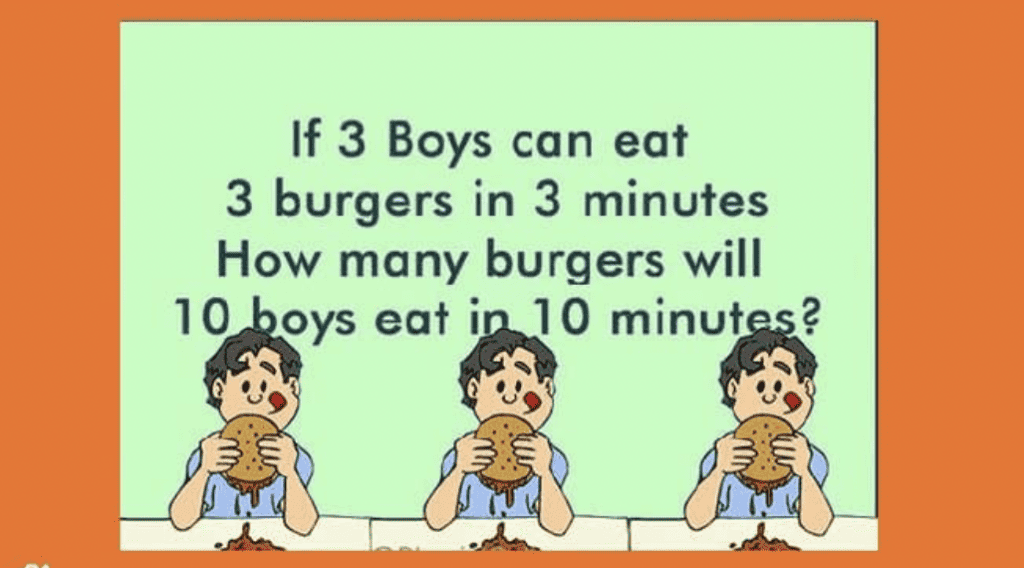
A: The answer is 100 burgers.
51. You're stuck in a room with three exits…One exit leads to a pit of venomous snakes. Another exit leads to a lethal inferno. The final exit leads to a pool of great white sharks that haven't eaten for six months.
Which door should you choose?

A: The best answer is Exit 3 because the snakes that haven't eaten in 6 months will be dead.
52. Four cars come to a four-way stop, all coming from a different direction. They can’t decide who got there first, so they all go forward at the same time. They do not crash into each other, but all four cars go. How is this possible?
A: They all made right-hand turns.
53. Throw away the outside and cook the inside, then eat the outside and throw away the inside. What is it?
A: Corn on the cob.
54. What is the probability of obtaining either a 6 or a 7 when throwing a pair of dice?
A: Therefore, the probability of throwing either a 6 or a 7 is 11/36.
Explain:
There are 36 possible throws of two dice because each of the six faces of the first die is matched with any of the six faces of the second one. Of these 36 possible throws, 11 produce either a 6 or a 7.
55. First, think of the color of the clouds. Next, think of the color of the snow. Now, think of the color of a bright full moon. Now answer quickly: what do cows drink?
A: Water
56. What is able to go up a chimney when down but unable to go down a chimney when up?
A: An umbrella
57. I weaken all men for hours each day. I show you strange visions while you are away. I take you by night, by day take you back. None suffer to have me, but do from my lack. What am I?
A: Sleep
58. Out of these six snowboards, one isn’t like the rest. What is it?

A: Number 4. Explain: On all the boards, the top of the longest stroke of the X is on the right, but this is reversed on the fourth board.
59. A woman shoots her husband. Then she holds him underwater for over 5 minutes. Finally, she hangs him. But 5 minutes later they both go out together and enjoy a wonderful dinner together. How can this be?
A: The woman was a photographer. She shot a picture of her husband, developed it, and hung it up to dry.
60. Turn me on my side and I am everything. Cut me in half and I am nothing. What am I?
A: The number 8
Frequently Asked Questions
What are the brain-twisting games?
It is a type of brain game that focuses on stimulating cognitive abilities and promoting mental agility. Some examples are Puzzle Games, Logic Games, Memory Games, Riddles, and Brainteasers.
What brain teasers keep your mind sharp?
Brain teasers are excellent intellectual games for adults, some examples are the missing number game, Lateral thinking puzzles, Visual Puzzles, Math brain teasers, and more.
What are the benefits of brain teasers for adults?
Brain teasers offer numerous benefits for adults that go beyond just entertainment. The best part of the game is encouraging you to think outside the box. Furthermore, you'll experience a sense of accomplishment and satisfaction after finding out the answers.
Bottom Line
Do you feel your brain is mind-bending? These are just some great brain teasers for adults that you can use to play with your friends immediately. If you want to play much tougher puzzles and brain games for adults, you can try free brain games for adults and free apps and platforms.
Want more fun and thrilling moments with your friends? Easy! You can customize your brain game with AhaSlides with a few simple steps. Try AhaSlides for free right away!
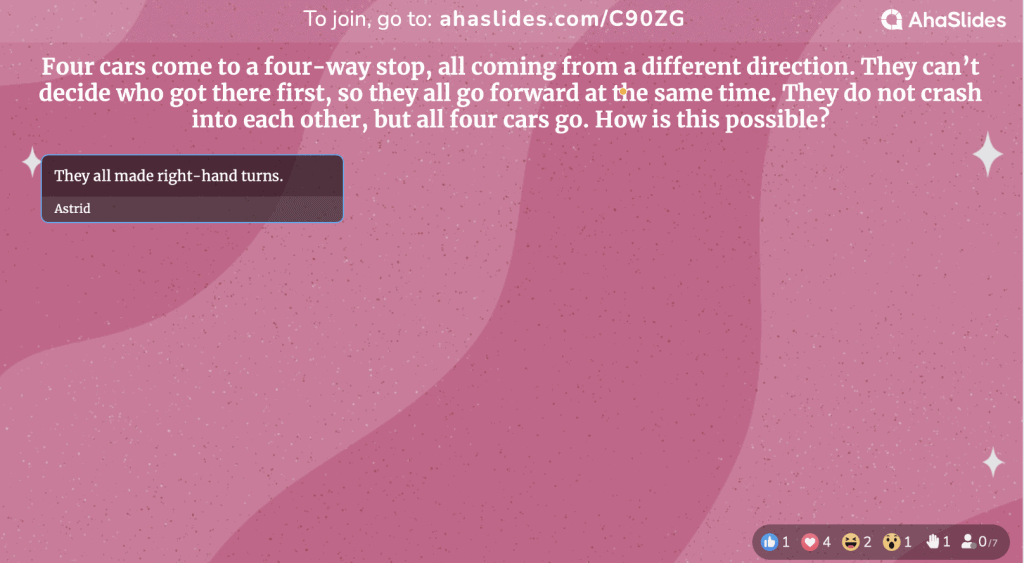
Ref: Reader's Digest | Mentalup.co

